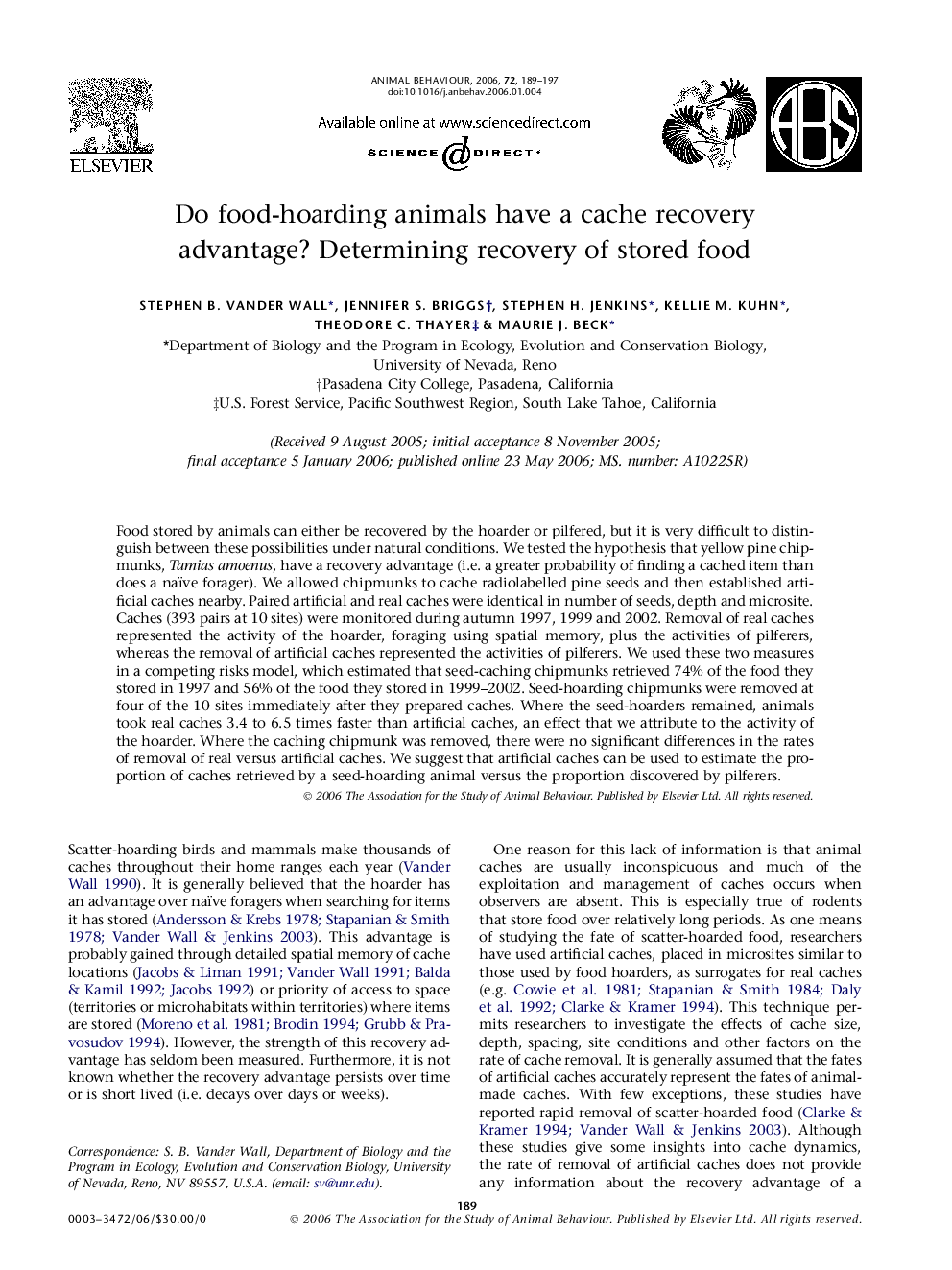| Article ID | Journal | Published Year | Pages | File Type |
|---|---|---|---|---|
| 2419136 | Animal Behaviour | 2006 | 9 Pages |
Food stored by animals can either be recovered by the hoarder or pilfered, but it is very difficult to distinguish between these possibilities under natural conditions. We tested the hypothesis that yellow pine chipmunks, Tamias amoenus, have a recovery advantage (i.e. a greater probability of finding a cached item than does a naïve forager). We allowed chipmunks to cache radiolabelled pine seeds and then established artificial caches nearby. Paired artificial and real caches were identical in number of seeds, depth and microsite. Caches (393 pairs at 10 sites) were monitored during autumn 1997, 1999 and 2002. Removal of real caches represented the activity of the hoarder, foraging using spatial memory, plus the activities of pilferers, whereas the removal of artificial caches represented the activities of pilferers. We used these two measures in a competing risks model, which estimated that seed-caching chipmunks retrieved 74% of the food they stored in 1997 and 56% of the food they stored in 1999–2002. Seed-hoarding chipmunks were removed at four of the 10 sites immediately after they prepared caches. Where the seed-hoarders remained, animals took real caches 3.4 to 6.5 times faster than artificial caches, an effect that we attribute to the activity of the hoarder. Where the caching chipmunk was removed, there were no significant differences in the rates of removal of real versus artificial caches. We suggest that artificial caches can be used to estimate the proportion of caches retrieved by a seed-hoarding animal versus the proportion discovered by pilferers.
